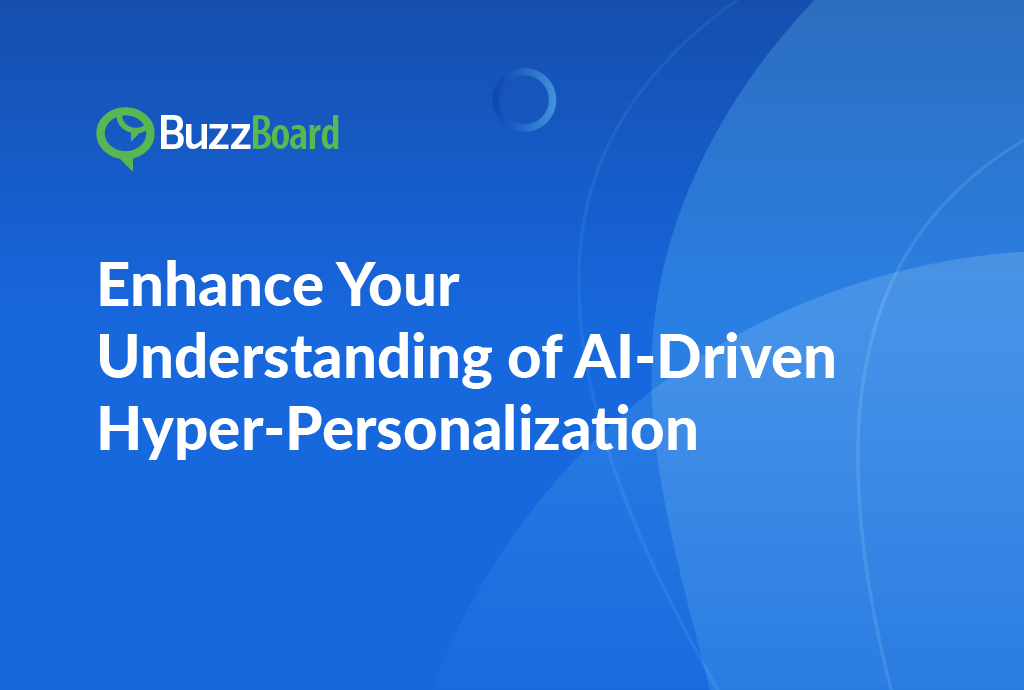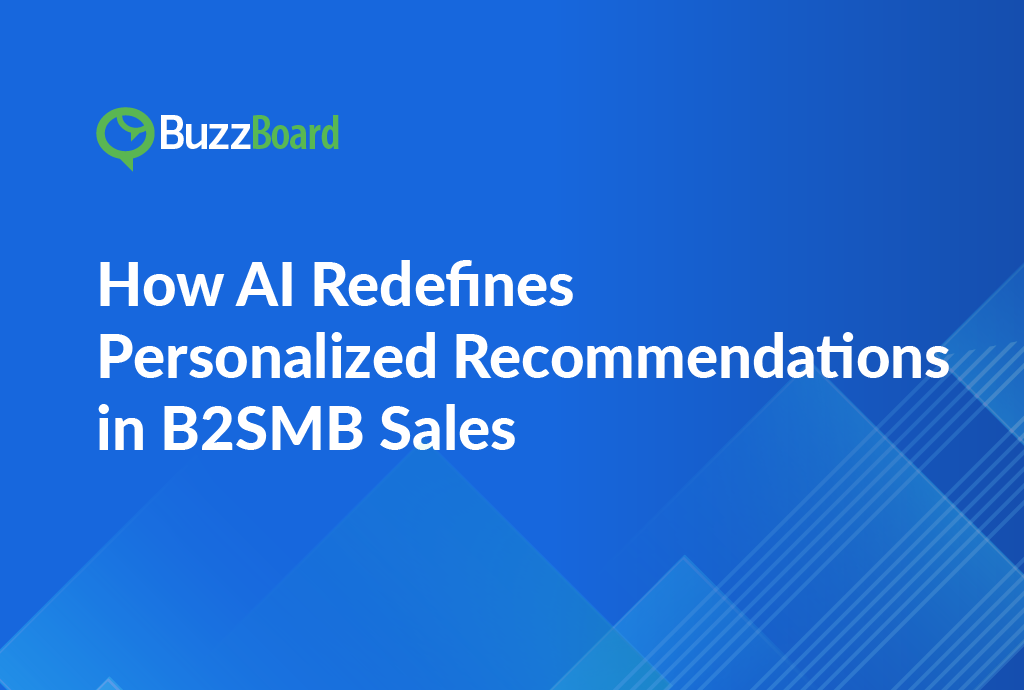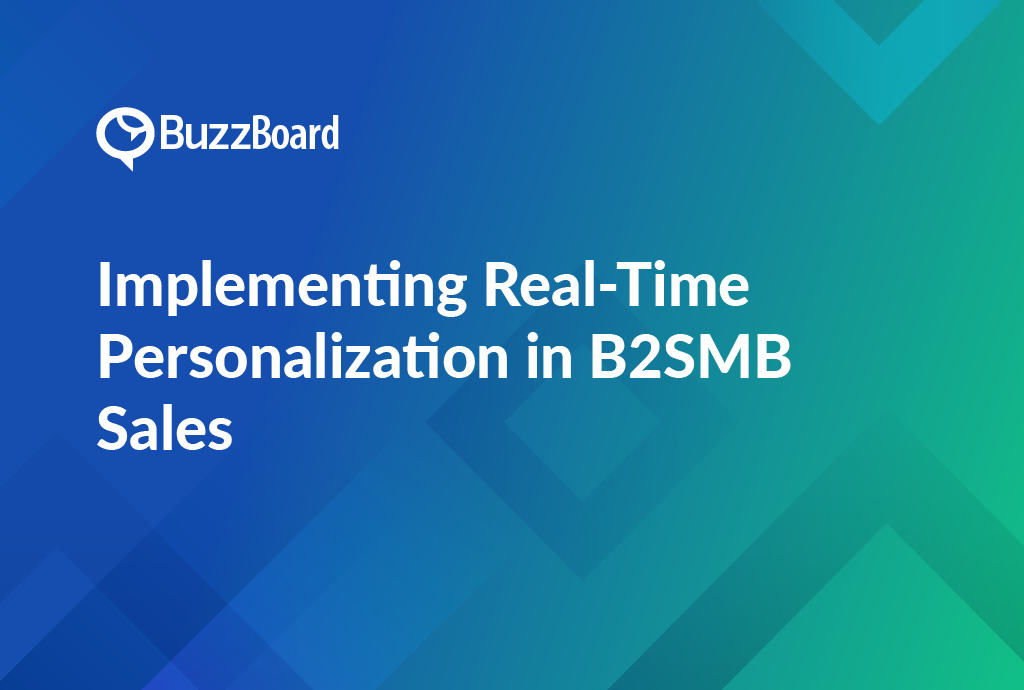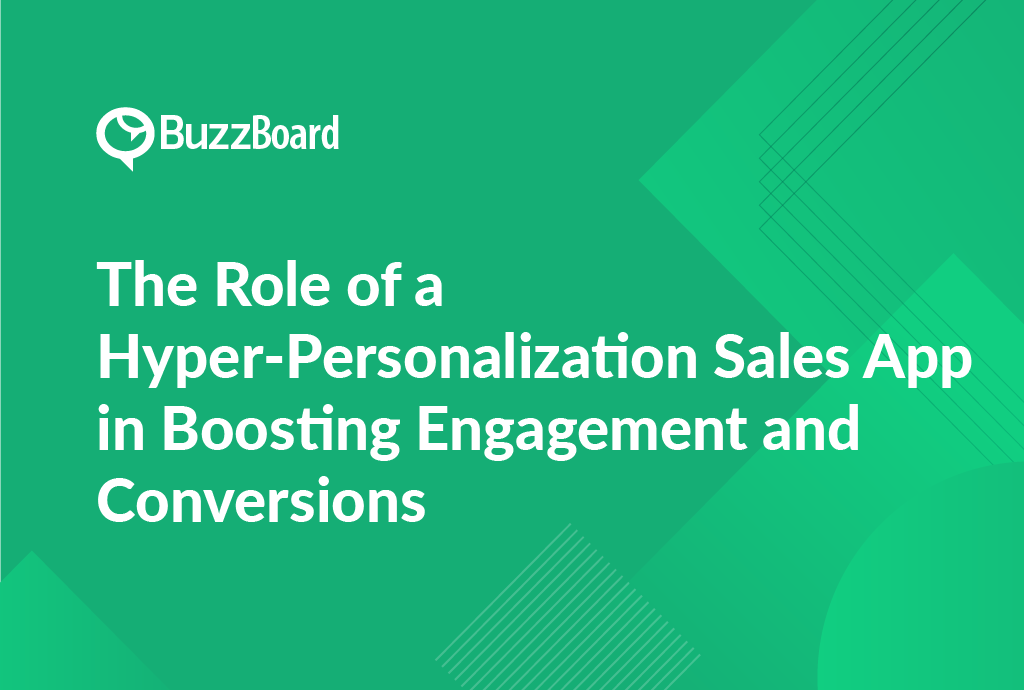Summary
Here are the key topics discussed in this article:
- Hyper-personalization and it’s Impact
- The Role of Artificial Intelligence in Hyper-personalization
- Understanding Generative AI and its Influence on B2SMB Sales
- How to Implement AI-Focused Hyper-personalization
- Digital Marketing Agencies Using AI for Hyper-personalization
- The Dynamic Outcome of Successful AI-Driven Hyper-personalization
- The Future of Sales
Introduction
In the constantly changing environment of sales and marketing, the term ‘hyper-personalization’ has become more than just a buzzword—it’s a transformative strategy that harnesses the capabilities of artificial intelligence (AI). For sales professionals selling digital marketing and media products to small and local businesses, understanding the synergy between hyper-personalization and AI is a pathway to unparalleled success. So, today we’ll discuss the intricacies of hyper-personalization, and how artificial intelligence enables this approach. Plus, we’ll peek into some real-world examples of digital marketing agencies using AI to hyper-personalize their messaging for small and local businesses.
Hyper-Personalization and Its Impact
Hyper-personalization is more than just customization; it’s about tailoring content, messaging, and experiences to the individual preferences, behaviors, and needs of each user. In the realm of selling digital marketing and media products, this approach goes beyond traditional segmentation, using advanced technologies, like artificial intelligence to create a highly personalized and engaging user experience.
The Role of Artificial Intelligence in Hyper-Personalization
At the core of hyper-personalization lies artificial intelligence, particularly generative AI. Generative AI leverages algorithms to analyze vast amounts of user data, allowing marketers to dynamically generate content that is uniquely tailored to each individual. This beats static personalization, as hyper-personalization is about creating dynamic, adaptive content that evolves based on user interactions.
Understanding Generative AI and Its Influence on B2SMB Sales
Generative AI, which is a subset of artificial intelligence, happens to be the driving force behind the customization of content in hyper-personalization. This technology analyzes patterns, behaviors, and preferences, enabling digital marketers and sellers to create content that speaks directly to the unique characteristics of each prospect or customer.
1. User Data Analysis
Generative AI starts by analyzing customer data—demographics, firmographics, behavior, purchase history, growth stage, and more. This analysis allows marketers to understand individual preferences and create a personalized experience.
2. Dynamic Content Generation
Unlike traditional personalization, which may involve static recommendations, generative AI dynamically generates content based on real-time user interactions. This ensures that content remains relevant and engaging throughout the user journey.
3. Adaptive Messaging
Generative AI further adapts messaging based on user responses, ensuring that the content aligns with changing preferences and behaviors. This adaptability enhances the effectiveness of various marketing and sales campaigns.
How to Implement AI-Focused Hyper-Personalization
For sales professionals looking to leverage hyper-personalization and AI in their prospecting and outreach efforts, a strategic approach is essential. Here’s a step-by-step guide to help navigate the implementation process:
1. Grasp a Comprehensive Understanding of Your Audience
Initiate the process by learning about your target audience. Gather and assess data to recognize patterns and preferences. This analytical method, centered on data-driven insights, lays the groundwork for the successful implementation of hyper-personalization strategies.
2. Establishing Distinct Personalization Objectives
Outline specific objectives for your hyper-personalization strategy. Whether the aim is to boost engagement, propel conversions, or fortify customer loyalty, articulating clear goals provides direction for your implementation endeavors.
3. Opt for Appropriate AI Solutions
Be smart in choosing AI tools; pick those that seamlessly match your specific goals and objectives. This may include generative AI platforms, customer relationship management (CRM) systems, and marketing automation tools—a smooth integration with your current systems has to be ensured.
4. Segment Your Audience
Segment your audience based on shared characteristics or behaviors. This segmentation allows for more precise content customization, ensuring that each segment receives content tailored to their specific needs.
5. Craft Dynamic Content
Leverage generative AI to craft dynamic, adaptive content. This may involve customized product suggestions, personalized messaging, and content that adapts according to user interactions.
6. Iterative Testing and Optimization
The integration of hyper-personalization is an ongoing and refined process. Engage in A/B testing to enhance your approach and consistently evaluate performance metrics. Utilize the acquired insights to make well-informed adjustments, ensuring the continuous optimization of your strategy over time.
Digital Marketing Agencies Using AI for Hyper-Personalization
To illustrate the effectiveness of AI-driven hyper-personalization, let’s explore some digital marketing agencies that have successfully implemented this strategy for small and local businesses:
1. LocalDirective
LocalDirective, a digital marketing agency, uses generative AI to hyper-personalize content for small businesses. By analyzing local market trends and user behaviors, they create dynamic content that resonates with the unique needs of each small business client.
2. SmartLocal
SmartLocal employs AI-driven hyper-personalization to optimize local advertising campaigns. Their approach involves dynamically generating ad creatives, adjusting messaging based on user interactions, and delivering targeted content that aligns with local market dynamics.
3. NeighborhoodNudge
NeighborhoodNudge specializes in hyper-personalized messaging for local businesses. Using generative AI, they craft personalized newsletters, social media content, and ads that speak directly to the preferences and behaviors of local audiences.
The Dynamic Outcome of Successful AI-Driven Hyper-Personalization
1. You Experience Better Customer Engagement
Hyper-personalized content captures the attention of users, resulting in higher engagement levels. Users are more likely to interact with content that speaks directly to their interests and needs.
2. Conversion Rates Go Higher
Tailoring content to individual preferences increases the likelihood of conversions. Users are more likely to take desired actions, such as making a purchase or filling out a form, when the content aligns with their specific interests.
3. Elevated Brand Fidelity
Personalized experiences foster a sense of connection and loyalty. Users are more likely to remain engaged with brands that consistently deliver content that resonates with them.
The Future of Sales Is Personal
The trajectory of digital sales and marketing undeniably gravitates towards a future defined by hyper-personalization. For sales professionals selling digital marketing products to small and local businesses, hyper-personalization is an indispensable aspect for success. The amalgamation of data-driven insights, artificial intelligence, and hyper-personalization strategies heralds a future where customers expect tailored, meaningful interactions. Brands that acknowledge and invest in this evolution are poised to not only thrive but also to establish lasting connections with their audiences. The future of sales is, indeed, extremely personal, ushering in an era where relevance, engagement, and authenticity converge to redefine the way brands communicate and resonate.








